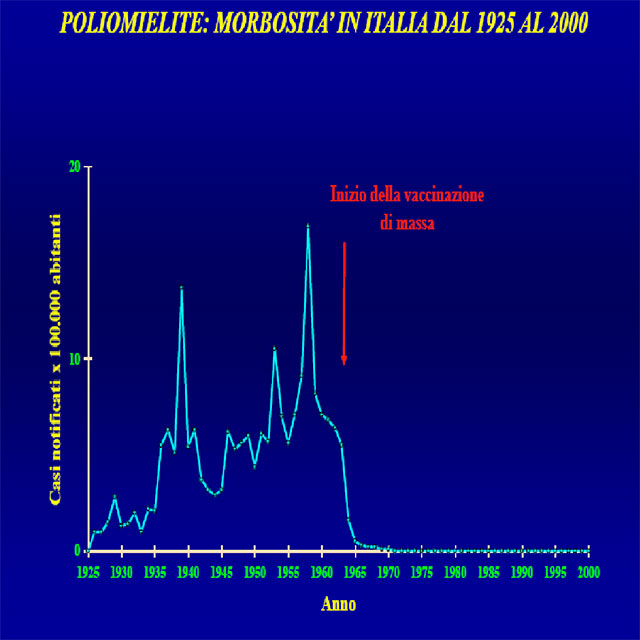Vaccinating against Poliomyelitis (Polio)
The epidemiological curves comparing pre- and post-vaccination periods show a sharp decrease in the number of cases over the years. It is clear that vaccinations have significantly changed the incidence of diseases for which immunisation exists, thus saving lives, reducing disease outcomes, reducing overall population suffering and improving quality of life.
The disease before and after the vaccination campaign in Italy
In industrialised countries, before the introduction of vaccination campaigns in the 1960s, polio epidemics affected thousands of children every year. Later, a progressive decrease in the disease was observed up to its near disappearance.

Since the 1970s, the vaccination programme has been extended worldwide with the aim of controlling the spread of polio globally. Today polio is endemic in only 4 countries: Afghanistan, India, Nigeria and Pakistan.
In 1994, the American continent was declared polio free.
Polio mainly affects children under the age of five and 1 in 200 infections causes irreversible flaccid paralysis (usually of the legs). Among those who remain paralysed, 5-10% die due to paralysis of the respiratory muscles. As long as even one child is infected with the polio virus, all children in the world are at risk of contracting the disease. In fact, polioviruses can be easily imported from one country to another and spread rapidly in non-immunised populations. Globally, countries have achieved different results in the polio eradication process, suggesting that the immunity thresholds of populations vary according to geographical areas, with important strategic, planning and priority-setting implications.
Launched in 1988, the global polio eradication initiative is led by WHO, Rotary International, Cdc and Unicef. In the first twenty years of activity, the number of polio cases has decreased by over 99%.
It is estimated that more than 5 million people have been saved the paralytic form of the disease thanks to vaccination.
Prompted by the WHO Governing Council and edited by the Global Polio Eradication Initiative, the 2010-2012 Strategic Plan for Polio Eradication aims to give new technical and financial impetus to activities to eradicate polio. The document provides for: stopping the spread of wild poliovirus in Asia and Africa, improving global surveillance and response to outbreaks, strengthening vaccination systems.



